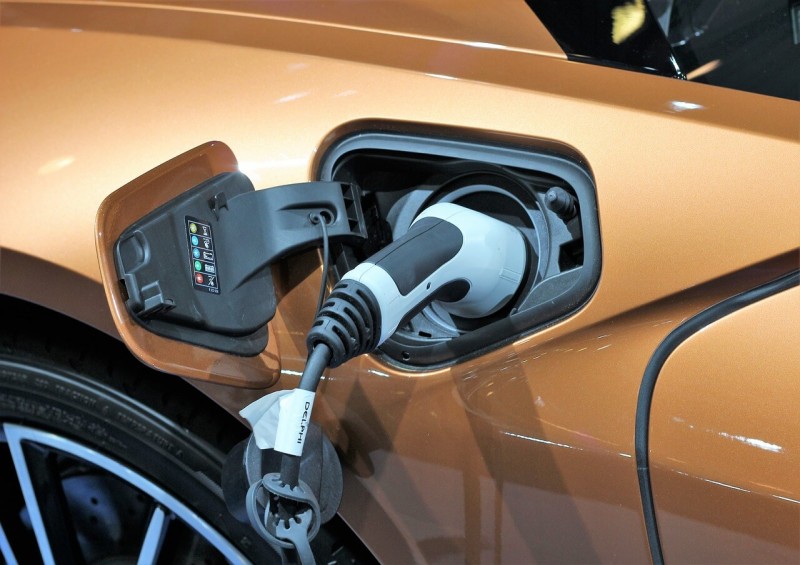Hybrid Cars: All You Need to Know

[Above: BMW I8 plug-in hybrid electric]
Skip to a section:
What are the benefits of hybrid cars?
How different is driving a hybrid car?
What are the best hybrid cars for 2019 in the UK?
How does a hybrid car work?
The basic concept of a hybrid car is to find a middle ground between an internal combustion engine (that’s a traditional petrol or diesel engine) and an electric one.
Each has their advantages - internal combustion engines have a near limitless range (assuming you can find a petrol station) and considerable power, and electric engines are emission-free and silent.
Finding the perfect balance between these begins with using both - a hybrid car has two engines (petrol and electric) and uses each when it’s the best choice.
Range Anxiety
Range anxiety is that feeling you can get when driving a pure electric vehicle, and you begin to worry that the battery is low and you’re simply not going to make it. Thankfully, hybrid cars have a backup to prevent range anxiety. Phew!
Not all hybrid cars are equal, however. There are three main types of hybrid cars and the ways they work are slightly different:
1 - Parallel Hybrids (Hybrid Electric Vehicle type, or HEV)
These work by allowing both the traditional engine and the electric motor direct access to the drive shaft – meaning both can power the car, either on their own or working as a team.
Most hybrids come under this banner, including the Toyota Prius hatchback or Toyota Prius+ MPV. It’s the perfect execution of the hybrid idea, utilising each engine for the parts of the drive they are best at.
With a parallel hybrid, the electric motor is used when starting the car, and for low speed driving, meaning it pulls away silently and is extremely fuel-efficient during city drives – coping with traffic lights and those lines of frustrated parents on the school run with ease.
Once some greater power is needed, either at particularly fast speeds or for a burst of acceleration, the petrol engine kicks in and that extra oomph is delivered immediately.
A system of regenerative breaking means that any surplus energy that comes from slowing down or using the brakes gets sent back into the electric motor, charging it up a little for use later – yes, that means the hybrid is charging its own batteries when going downhill!
Batteries in HEV parallel hybrids are considerably smaller than those seen in other types of hybrid or electric vehicle and typically are only ever needed to power the car on their own for a mile or two.
2 - Parallel hybrids (Plug-in Hybrid Electric Vehicle type, or PHEV)
A sister to the HEV-standard parallel, the PHEV hybrid has a larger battery to move the electric motor from its role as a more secondary drive source to the primary one.
With an independent range now reaching 30 miles or more, the PHEV is much closer to an all-electric car.
The other major change, of course, is the ability to plug-in the car in an identical way to an all-electric vehicle and charge its battery from an external source rather than relying solely on the combustion engine for the task.
The PHEV version of the parallel hybrid can be seen as a step closer to the full electric vehicle model.
3 - Range extender hybrids (PHEV type)
A range extender hybrid is driven purely by its electric motor, with a secondary conventional engine used for the sole purpose of charging the batteries.
It is essentially a fully electric vehicle with a back-up internal combustion engine (usually a much smaller engine closer to a motorcycle engine than a traditional car one) to remove some of that range anxiety.
The range-extending engine only extends the main battery range and doesn’t offer an unlimited driving distance.
However, it does make sure you can get the car to any reasonable destination to fully recharge the battery from an outside source.
One other great advantage of a range extender vehicle, is the pleasure that it is obtained by the addition of the letters REx in the car title, evoking the flavour of the world’s favourite dinosaur! How long before a Ford realises this and releases a special edition hybrid Model T to celebrate?
What are the benefits of hybrid cars and why get one?
Like any vehicle option, there are advantages and disadvantages of hybrid cars.
Unlike most other options, however, the very idea of a hybrid car is to bring about the advantages of two different types of vehicle and do away with the disadvantages of both.
In this way, when considering a list like ‘what are the pros and cons of a hybrid car?’ the pros column seems to have it all!
Here are the reasons to get a hybrid car:
Costs
There’s no doubt that buying a hybrid car is more expensive than a comparable pure petrol version.
The additional technology and dual-engine configuration come with a premium price tag, but once that initial cost is absorbed, the on-going savings are considerable – hybrids are cheap-to-run cars.
Fuel consumption becomes staggeringly low by comparison with figures approaching 300mpg – realistically, hybrid cars use six-to-eight times less fuel than their traditional counterparts.
For an average driver, that can be a saving of around £200 per month in fuel alone.
When leasing a hybrid, the savings are even more considerable, as the premium involved in obtaining the car is considerably lower than a full purchase. Saving £200 per month in fuel makes a substantial dent in the overall total monthly outgoing for the car!
There are plenty of other savings on the side too, from avoiding the London congestion charge for vehicles with a lower CO2 emission than 75g/km, to a lower level of benefit in kind (BiK) tax for company cars and a lower hybrid car road tax overall.
Environmentally friendly
The focus point of hybrid and electric cars is, of course, their low impact on the environment.
Despite still using a standard engine, the emissions of a modern hybrid car are significantly lower than their contemporaries, with figures below 75g/km a usual sight in hybrid car specifications.
With a European directive in place to lower emissions year-on-year, hybrids offer a perfect solution to achieving these regulations both now and in the future.
The pleasure of a silent drive
Despite the fact that a deep growing roar is seen as a sign of delight for many car-lovers the world over, the truth is that most of us would happily do without the constant background noise of a car engine while we travel.
It’s something that goes unnoticed until you experience the change. The first time you sit in a silent car as it pulls away from its parking spot, however, will be the moment you never want to go back.
Gone are the constant grumbles, roars and shudders of a traditional internal combustion engine, replaced with a sweet harmony that feels so inviting you almost expect butterflies and passing robins to settle on the bonnet while you traverse the city streets!
It may not be something that appears on a sheet of car statistics, but the silence of the drive is a compelling reason to move to a hybrid or electric vehicle.
Using an alternative fuel engine – how different is driving a hybrid car?
Much is done to make sure that the actual experience of driving a hybrid car is similar to that of a traditional petrol vehicle.
While some concept electric cars exist that remove the steering wheel in preference to a game-style controller or centring the driving position and doing away with pedals altogether, a standard hybrid looks and feels just like any other car on the road.
The silence of the drive, as already mentioned, provides a more relaxed feel and makes conversation or listening to music while you drive more of a pleasure, but does not impact your driving ability.
There are new things to look at. Many hybrids have displays to help you understand how the car is driving, with a breakdown on battery charge or fuel usage shown in order to allow you to optimise your driving, but just like a rev counter, these do not require a high degree of attention for a typical drive and soon become part of the background of driving.
How long do the batteries last in a hybrid car?
Ownership of a hybrid does bring with it a slightly different level of maintenance. The battery will need replacing over time – typically between five and ten years of use, but the general level of wear and tear is slightly less than with a traditional vehicle and you will find that long-term maintenance is often slightly cheaper than petrol cars.
When leasing a hybrid, you will be driving a vehicle in its first three years of life – there will be no worry regarding battery replacement or other late-stage maintenance.
Leasing offers you all the advantages of the hybrid’s impressive fuel economy and environmental responsibility without any of the potential longer-term costs.
What are the best hybrid cars for 2019 in the UK?
With hybrid technology now into its third decade (the first Toyota Prius saw its launch in 1997!), there are many quality hybrid cars on the market to choose from.
This variety of range means that choosing a hybrid involves much of the same criteria as any other car – body shape, boot space, number of seats, driving statistics and, of course, price.
Some of the more popular and well-regarded cheapest hybrid cars available to lease in the UK today are:
Toyota Prius
No list of hybrid cars in the UK would be complete without the Prius – a car which has become linked with hybrid technology in an almost unique way. The latest Prius offers a solidly practical vehicle with impressive fuel economy.
Now available as both a PHEV and standard HEV parallel versions, the fourth-generation Prius still holds a position towards the front of the pack with its reliability and convincing normality – an effort-free move from the world of petrol-vehicles to a modern electric-based drive.
Toyota Yaris
Toyota’s second offering to the world of hybrid is the smaller and even more economical Yaris.
For driving around the city, the Yaris offers a lower-cost offering into the world of hybrid economy, with spacious interior and stunning practicality.
Only the relative cheapness of its interior lets it down, but this is easily overlooked when considering the overall economy of the vehicle.
Mitsubishi Outlander
Boasting a full SUV body, the Mitsubishi Outlander has become a favourite across the UK, with all the economy and environmental friendliness of a hybrid in a shell that offers unexpected power and performance.
This PHEV also benefits from an impressive overall cost, with sub-£400 lease contracts available that match the equivalent petrol and diesel versions.
BMW i3 REx
The headline range extender, the BMW i3 REx is already beloved by many. The odd-shape doesn’t take away from the fact that this impressive car is both fun to drive and almost cost-free for inner-city hops.
The hybrid nature stops any feeling of range anxiety – with a small tank of petrol, it effectively doubles its natural electric range, and if all goes wrong and you can’t make it to a suitable place to charge, simply fill it up again and off you go.
Combining some of the best factors of electric vehicles with the range extending of the secondary engine, the BMW i3 may well be a blueprint for the future.
Ford Mondeo Hybrid
Boasting impressive driving statistics – high top end and solid 0-60 numbers, the Ford Mondeo saloon hybrid provides the styling expected for a modern business car and doesn’t compromise on the driving experience.
With a comfortable and roomy interior, the Mondeo is likely to become a benchmark for a middle-class hybrid appealing to the edge of the executive market.
Volkswagen XL1
For a bit of fun, look no further than the Volkswagen XL1. Completely out of reach for the normal driver, this limited production diesel-powered PHEV was designed to manage an outrageous 100km on a single litre of diesel fuel while still being practical – this is the executive hybrid car to have!
Currently, none of our partners offers the £100k XL1 for lease, but if you are after such a fantastic car, give us at Complete Leasing a call and we’ll do what we can!
Leasing a hybrid car
When looking at a modern vehicle, leasing provides the best cost-management solution possible.
Without the significant outlay of purchasing a hybrid vehicle from the showroom, you can soon be driving one of these modern environmentally friendly and economic cars.
Take a look at our offers here at Complete Leasing or give one of our specialist advisors a call. We will find the perfect hybrid for you on a budget you can afford.




































